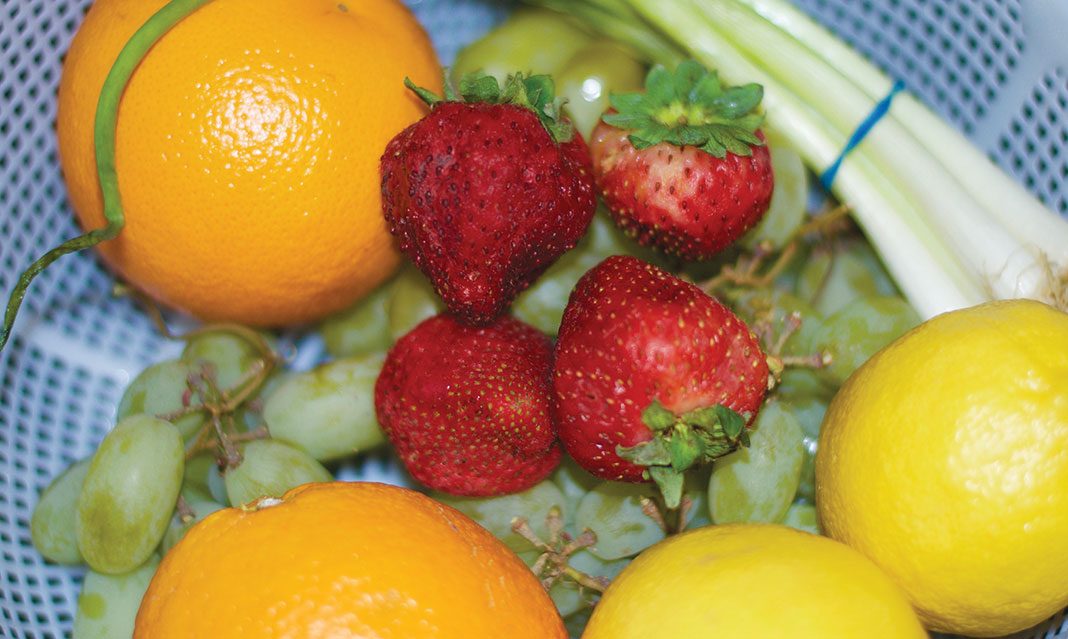In February of 1994, FoodShare Toronto, a non-profit organization dedicated to delivering healthy food and food education to schools and communities, packed their first 40 boxes of fresh fruits and vegetables for their new initiative, the Good Food Box program.
Last year, the organization delivered 30, 826 Good Food Boxes to 109 drop-off locations across Toronto. This year, UTM will join that list.
According to Maleeha Baig, UTMSU’s VP equity, UTM will begin taking orders for the Good Food Box program beginning in January. In this year’s AGM, UTMSU listed three new initiatives which planned to increase students’ access to fresh, wholesome food within their 2016 annual report, one of which is through the Good Food Box program.
“It helps serve the UTM community by providing students, faculty, and staff with affordable, healthy, and locally-grown food options. The UTMSU felt that this new service would complement our Food Centre,” Baig says.
According to the UTMSU’s 2016 annual report, students will be able to purchase Good Food Boxes from the info booth, and deliveries will occur bi-weekly to the student centre.
Moorthi Senaratne, the Good Food Box program manager, explains that the initiative provides customers with a box of fresh produce, featuring both locally-grown products and some international favourites, like bananas. Each box contains a combination of 10 to 14 items, depending on the season.
“It is an initiative to create access to fresh produce for people. People don’t get to choose what goes inside the box; FoodShare just sorts it out for them. If people like cabbage, you may get cabbage sometimes. This way it kind of pushes you to try something you wouldn’t normally use,” Seneratne says.
Currently, FoodShare’s Good Food Box program works to serve four universities in the GTA. Boxes can be ordered and delivered to the University of Toronto, St. George and Scarborough locations, York University, and Ryerson University’s early childhood development centre.
Seneratne explains that the organization offers many box choices for customers, including organic options. Boxes range from $13 to $34, depending on the size of the box and its contents.
Both the Good Food Box and Organic Box are available in large and small sizes.
“We have another box called the Wellness Box, and it’s very popular with students, because it has three or four items that are already cut up. It ranges from nine to 13 items of fruits and vegetables. For example, there may be a bag of cut celery, a bag of cut carrots, cut cantaloupe, sometimes cut pineapple or cut squash,” Seneratne says. “And if you are just a fruit person, we have a fruit box for $13.” Seneratne says that depending on the order, per week the organization delivers 10 to 40 boxes, with some months reaching 50 or more boxes provided.
Students in the GTA can order Good Food Boxes through their student union, residence housing, or through FoodShare Toronto, which will provide them with a pickup location in their area.
Esther Osei, a second-year double major in chemistry and art history at UTM, believes that the Good Food Box program would be a good initiative to implement on campus, but says the cost may be a problem.
“As you are currently aware, UTM hosts Farmers’ Markets and has been trying to improve its food quality. To have this readily available fresh and organic food being served at the campus, I believe students would love it. However, the only obstacle would be the price. Students already have to pay $5 and up for salad bars, so although this implementation would be highly beneficial to the status that UTM holds as environmentally-friendly, I don’t think it would make much of a difference for the students,” she explains.
Through the Good Food Box program, FoodShare Toronto hopes to create models so other institutions like universities can begin their own programs. Seneratne says they want to create similar models in cities across Ontario, and ultimately across Canada.
“We hope to create more access to fresh produce and support local farmers. Also, we hope to create a change, a habit, with people’s diets. When you give people more access to fruits and vegetables they want to increase their consumption of fruits and vegetables.”



